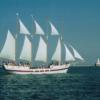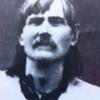-
Posts
1,735 -
Joined
-
Last visited
-
 flying_dutchman2 reacted to a post in a topic:
After the storm
flying_dutchman2 reacted to a post in a topic:
After the storm
-
 FrankWouts reacted to a post in a topic:
Papegojan 1627 by mati - FINISHED - 1/48
FrankWouts reacted to a post in a topic:
Papegojan 1627 by mati - FINISHED - 1/48
-
 flying_dutchman2 reacted to a post in a topic:
English Royal Yacht by Ab Hoving - FINISHED - CARD
flying_dutchman2 reacted to a post in a topic:
English Royal Yacht by Ab Hoving - FINISHED - CARD
-
Beautiful! Lots of gold..... I like it. Marcus
- 77 replies
-
- Royal Yacht
- card
-
(and 1 more)
Tagged with:
-
Great review, Chris! I got it a couple of weeks ago and it is another excellent book from Ab and Emiel Hoving. This book will give me the courage to build a ship in card. Marrc
- 5 replies
-
- Book Review
- Card
-
(and 1 more)
Tagged with:
-

Intro to Card Models Intro and Table of Contents
flying_dutchman2 replied to ccoyle's topic in Card and Paper Models
Hi Chris, Thanks for the link. I am going to check some Dutch sites (I speak it fluently) and plug in the weight of paper/card numbers mentioned in Ab's new book. Marcus Thanks Phil, for the information. Marcus -

Intro to Card Models Intro and Table of Contents
flying_dutchman2 replied to ccoyle's topic in Card and Paper Models
Hi Chris, I am going to try my hand at scratch building paper models. Yesterday I received Ab Hoving's book "Dutch 17th Century Ship Models in Paper", from Seawatch Books. I will start with a small Dutch merchant ship. In his book, Ab discusses the types of weight of the paper but it is the Dutch kind he uses. Can't seem to find a conversion table (European to US paper weight). What do you recommend I use? Abe mentions 0.5 mm thick, 1mm thick and 2mm thick. Thanks in advance, Marcus -

Technical drawings & Dutch shell first
flying_dutchman2 replied to Jules van Beek's topic in Nautical/Naval History
Jules, I second that from @druxey, is there a thesis or dissertation on the above information? If so, I would love to read it. I would also like to see the biography list of all the references you are using as you have some interesting articles that I have not heard of before. Thanks, Marcus -

Technical drawings & Dutch shell first
flying_dutchman2 replied to Jules van Beek's topic in Nautical/Naval History
This is a fascinating topic and I have been reading this thoroughly. It also gives me a better understanding of it all (Thank you Jules). I use Witsen's manuscript and Hoving's book which is an interpretation of Witsen's manuscript plus several other books to attempt to either built another Fluit (First I need to finish the Zeehaen), or the war yacht, the Heemskerck. Marcus -

Technical drawings & Dutch shell first
flying_dutchman2 replied to Jules van Beek's topic in Nautical/Naval History
Hallo Jues, The following link are from two Dutch model builders that are building models "shell first". They are both very interesting threads to follow. Winter's Hollandse tweedekker 1/75 POF bouw door Stephan Kertész | ModelbouwForum.nl Marcus -

The Sinking of the Bismarck ... with LEGOs ...
flying_dutchman2 replied to uss frolick's topic in Nautical/Naval History
Thanks for posting. It is amazing how this was done and the work that went into this. I like how all the figures were swimming a backstroke when the ship went down. Marcus -

Drafting
flying_dutchman2 replied to mangulator63's topic in CAD and 3D Modelling/Drafting Plans with Software
@mangulator63 "I'm just curious, does anyone still sit at a drafting board and design and draw anymore?" Yes, I do. I still have my drafting table and Rotring pens (from 1978 when I studied landscape Architecture at the Horticulture College in the Netherlands) and still use them. My present built went from 1:75 to 1:37.5. I have a fast pc with TurboCAD installed on it. But firing that up and scanning in the plans, blowing that up to twice the size, printing them all, and then taping that all together takes much longer then cutting a piece of velum from a 5 ft wide 100 ft long roll. Measure by hand the dimensions on the original plans and transcribe them on the 1:37.5. Marc
About us
Modelshipworld - Advancing Ship Modeling through Research
SSL Secured
Your security is important for us so this Website is SSL-Secured
NRG Mailing Address
Nautical Research Guild
237 South Lincoln Street
Westmont IL, 60559-1917
Model Ship World ® and the MSW logo are Registered Trademarks, and belong to the Nautical Research Guild (United States Patent and Trademark Office: No. 6,929,264 & No. 6,929,274, registered Dec. 20, 2022)
Helpful Links
About the NRG
If you enjoy building ship models that are historically accurate as well as beautiful, then The Nautical Research Guild (NRG) is just right for you.
The Guild is a non-profit educational organization whose mission is to “Advance Ship Modeling Through Research”. We provide support to our members in their efforts to raise the quality of their model ships.
The Nautical Research Guild has published our world-renowned quarterly magazine, The Nautical Research Journal, since 1955. The pages of the Journal are full of articles by accomplished ship modelers who show you how they create those exquisite details on their models, and by maritime historians who show you the correct details to build. The Journal is available in both print and digital editions. Go to the NRG web site (www.thenrg.org) to download a complimentary digital copy of the Journal. The NRG also publishes plan sets, books and compilations of back issues of the Journal and the former Ships in Scale and Model Ship Builder magazines.






.thumb.jpeg.fc5d633a7b34428fcf19419a73d56d55.jpeg)





